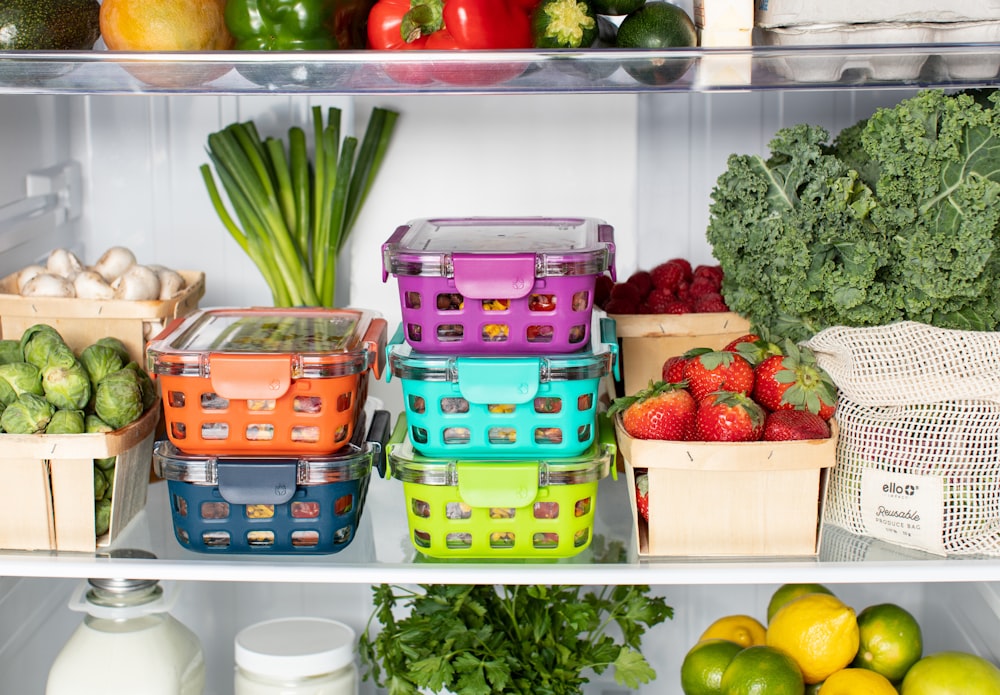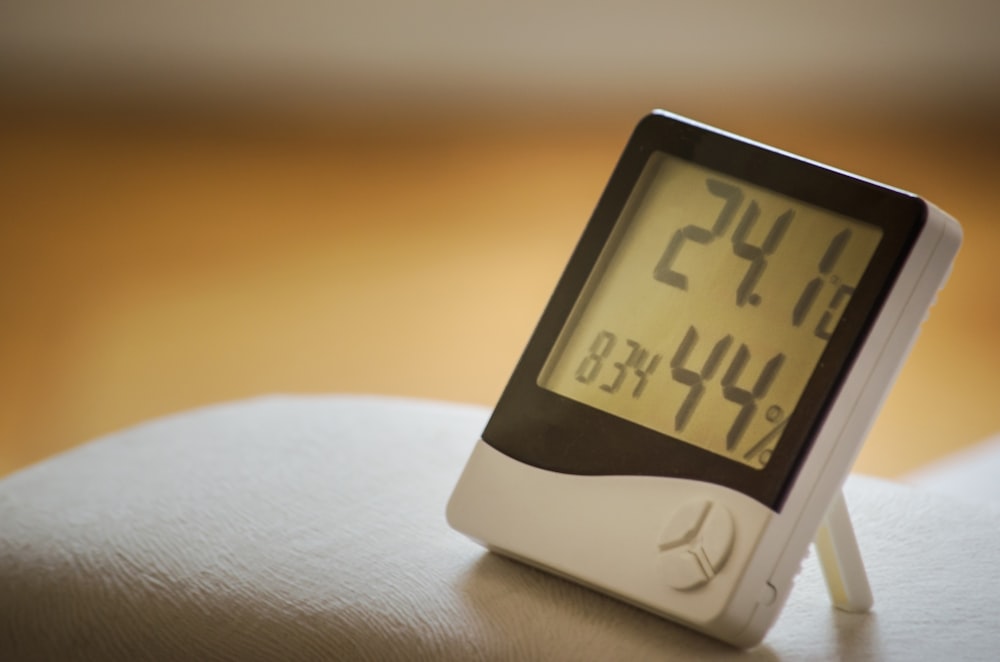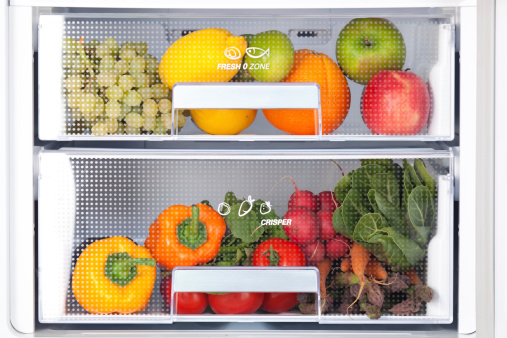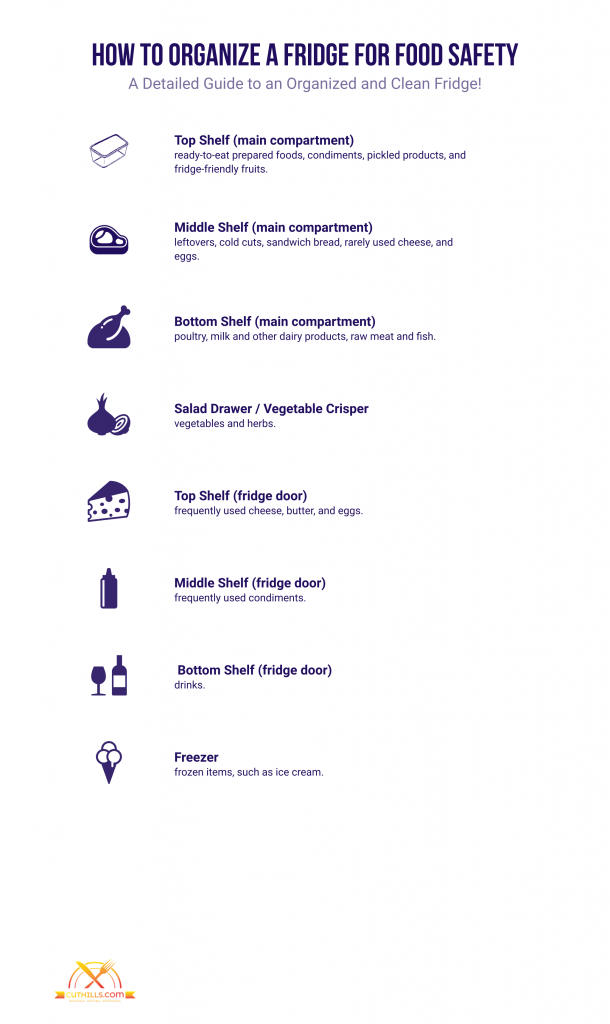Although most overlook this, refrigeration plays a crucial role in keeping food safe. From the fridge’s temperature to the order of the food on the shelves, these have a massive role in keeping everything clean—and bacteria-free. So, the question is this: how to organize a fridge for food safety? Find out below.
What’s the Best Way to Organize a Fridge for Food Safety?
Before I discuss how to organize a fridge for food safety, you must know the best way to do it. There are 3 factors that’ll help you decide what items to store and where to put them. Following these helps you ensure food safety and convenience.
Here’s a brief overview of each one:
✅ Food Safety

Refrigerators keep our food fresh a little longer than their natural shelf lives. But don’t be fooled, as they don’t protect our food from harmful bacteria.
So, to reduce the risk, keep this in mind: the higher the chances a food can make you sick, the lower you should store it. This way, it keeps the food cold without cross-contaminating the other items stored.
For example, never store raw poultry above leftovers as juices from the chicken might drip down and contaminate your food.
✅ Temperature

The temperature inside a fridge varies. For instance, some refrigerators may have the back of their bottom shelves as the coldest spot. Meanwhile, others have theirs near the vents.
But regardless, make sure that no part of your refrigerator goes over 39°F (4°C).
I suggest setting your fridge to hold at least a temperature of 34°F (1°C) in these places. This way, you can maximize the use of each shelf.
✅ Humidity

It plays a massive role in maintaining the freshness of vegetables and fruits. The crisper or salad drawer mounted onto the bottom of a fridge prevents cold air from entering.
With this, the area stays humid, perfect for veggies.
Now that you know what items to store and where to keep them, check out my guide on organizing food in the fridge below.
Remember, keep these three factors in mind when organizing your refrigerator for the best results!
How to Organize a Fridge for Food Safety? A Complete Guide

Organizing the Main Compartment
The fridge’s main compartment is where to place large food items or things that have short shelf lives. And this consists of the following parts:
🔵 Top Shelf
- Ready-to-eat prepared foods. Examples of these include jarred tomatoes or any canned food. Placing ready-to-eat meals on the top makes getting and putting them back more convenient.
- Condiments you don’t use often. Chinese bean paste, curry paste, or tahini. In short, seasonings that you use solely for cooking. It doesn’t crowd your fridge and makes it easier to grab on a whim.
- Pickled products. Jalapeños, olives, dill spears, or ramps. If you feel the urge to eat some of these, placing them on top should be more accessible.
- Fridge-friendly fruits. Oranges, berries, melons, or apples. Putting these fruits on top makes it easy to grab after dinner, during breakfast, or whenever you feel like it.
🔵 Middle Shelf
- Leftovers. Make sure to put them in a sealed, airtight container. These range from mac and cheese to even pet food!
- Cold cuts. Keep these in their packaging or a sealed container.
- Sandwich bread. Potato rolls, multigrain bread, sliced loaves, etc.
- Cheese you rarely use. Again, only place them inside the fridge if it’s still in their original packaging. If not, you can put the cheese in a sealed bag.
- Eggs in a carton. Only place eggs that you’ll likely be using right away. If not, place them on their dedicated shelf to maximize shelf life.
🔵 Bottom Shelf
- Poultry. Place fresh chicken at the bottom, but make sure to wrap it first.
- Milk. Since the bottom is among the coldest spots in a fridge, it’s perfect for milk of any kind.
- Other dairy products. These range from commercial heavy cream to homemade cream cheese.
- Raw meat. Before placing raw meat in the fridge, wrap it carefully and put it on a plate. This rule applies to all cuts of meat, whether it’s beef, pork, or lamb.
- Raw fish. I recommend placing fish on a tray to prevent its juices from spilling. Again, this applies to all kinds of fish.
Organizing the Salad Drawer or Vegetable Crisper
Designated for vegetables only, here are the things you can put in the drawer:
- Vegetables. Make sure to place the veggies in separate plastic bags. Ensure they have some space open to prevent rapid rotting. These include celeries, carrots, cucumbers, turnips, broccoli, etc.
- Herbs. Put herbs inside a zipper-lock bag before storage. And the herbs you can put range from parsley to rosemary.
Organizing the Fridge Door
This is the best place to store items you often use and don’t require cold temperatures. And these consist of the following parts:
🔵 Top Shelf
- Cheese you use often. These include types of cheese that you’d use on sandwiches, burgers, or mac and cheese. Examples include cheddar cheese and American cheese.
- Eggs. If you go through cartons of eggs weekly, I suggest placing them here.
- Butter. Butter won’t freeze up as badly when placed at the fridge door, making it easier to spread.
🔵 Middle Shelf
- Condiments you often use. The middle shelf is the perfect place for sauces, whether ketchup, mayonnaise, or mustard. It’s easy to grab and put back. Just make sure these condiments are in their original packaging.
🔵 Bottom Shelf
- Drinks. The bottom shelf is often the coldest and is perfect for everyday beverages. And this makes drinks easy to grab and store. I recommend placing whole milk, juice, coke, etc.
Whether you’re planning to stock your fridge on a budget or splurge, this guide will help you get the most out of it.
Frequently Asked Questions
Q: What should I store at the top of my fridge?
A: You need to reserve the top of your fridge for cooked or ready-to-eat foods. It has the perfect temperature to preserve these kinds of items. Also, being the second warmest part of a fridge, it’s a great place for snacks and leftovers.
Q: What’s the correct way of storing food in the fridge?
A: When storing food in the fridge, place them in an airtight container first. It prevents the food from contaminating other items in the refrigerator. I suggest putting them at the very bottom to avoid further contamination.
Q: How to organize vegetables in the refrigerator?
A: Most vegetables thrive and last longer when stored humidly. Usually, this will be in the drawer in a fridge dedicated to veggies and fruits or areas labeled with “high humidity.” But if not possible, you can store vegetables in plastic bags and place them in the main compartment. Just make sure to put them away from raw food.
Q: How to organize a refrigerator like a professional chef?
A: Chefs usually stock their fridges to practice food safety and not let them go to waste. Generally, chefs put away several items of the same food and place the older ones at the front. This way, they’re able to use the older items first.
Q: How much space should I leave around for my fridge?
A: Another way to keep food safe in your refrigerator is by leaving some breathing space. After all, fridges also need to breathe, and when boxed in, this can spoil the items outside. Generally, I recommend leaving at least an inch of extra room for the back and top of your refrigerator.
Final Words
How to organize a fridge for food safety? From arranging via temperature or shelf life, there’s plenty of adjusting to do. But following the rules mentioned can make your life easier. Each helps you make the necessary changes to ensure all food you put in your fridge is safe to consume.
